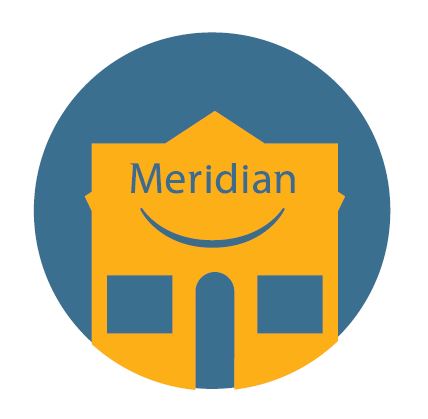Big banks reign over Canada’s mortgage market, but one segment that they particularly dominate in is readvanceable mortgages.
If you want a good readvanceable you have very few choices outside of the Big 6 banks. Meridian Credit Union is one of those very few.
The company’s Flex-Equity Mortgage Line has all the trappings of a major bank readvanceable, with added benefits. Not to mention, it currently has the lowest lender-offered 5-year fixed rate in Canada for a readvanceable mortgage.
The Basics: What is a Readvanceable Mortgage?
In simple terms, it’s a mortgage linked to a line of credit (HELOC).
When you pay down the mortgage principal, it lets you re-borrow that same amount from the credit line.
Readvanceables are a convenient source of low-cost, on-demand funds. People use the credit line for renovations, investing, personal expenses and even as a substitute for an emergency fund.
How does Meridian’s Flex-Equity Mortgage Work?
The Flex-Equity Mortgage lets you couple any of Meridian’s fixed or variable terms with an automatically readvanceable line of credit.
Here’s how it works:
Let’s suppose you make a $1,000 monthly mortgage payment and $600 of that is principal. The Flex-Equity Mortgage lets you re-borrow that $600 from the revolving line of credit.
This “re-balancing” of available credit happens automatically on the third of every month, meaning your LOC credit limit rises every month as your mortgage balance falls.
The Basics
- Maximum loan-to-value: 80% (even the revolving portion can be up to 80% of your home value)
- Lump-sum prepayment and payment increase option: 20% annually
- Maximum amortization (mortgage portion): 25 years
- Occupancy: Owner-occupied principal residences only
- Portability: Yes, throughout most of Ontario (for the mortgage portion only; the HELOC portion must be re-set-up)
- Maximum LOC amount: $800,000
- Maximum property value: $2 million
- Skip-a-payment option: Yes
- Compounding: Monthly (line of credit); Semi-annually (mortgage portion)
- Availability: Ontario only. Through Meridian branches and mortgage specialists (it’s coming to the mortgage broker channel in the “near future,” says Meridian)
The Pros
Let’s start with the rate. As of today (September 19, 2019), it’s the best in the business at 2.49% for a 5-year fixed. The LOC rate is a typical prime + 0.50%, or 4.45%.
But Meridian’s real edge is flexibility. It’s a provincially-regulated credit union, so it’s not bound by various federal mortgage restrictions. That lets it do things that big banks can’t.
One of those things is lending you a revolving line of credit for up to 80% of your home’s value. Banks are limited by OSFI (the bank regulator) to 65%. Meridian lets you borrow more money—which ideally you’ll use for prudent and productive purposes, like investing, building your business or making value-adding home improvements.
Another Meridian edge you don’t get at a bank is qualifying flexibility. Because Ontario regulators are sensible enough to let credit unions impose their own underwriting limits, Meridian isn’t hamstrung by the federal mortgage stress test.
Here’s how Meridian describes it:
We use the stress test to help evaluate whether a mortgage is a good fit for you. We don’t want you to take out a mortgage that you can’t actually afford. However, we don’t disqualify people for mortgages based solely on the results of the stress test. As a provincially regulated financial institution, we have more flexibility when it comes to the mortgages we offer and approve. The stress test is a great way to evaluate risk, but there are factors it doesn’t take into account, like income appreciation, accelerated payment options, and overall principal reduction. We work hard to find flexible solutions to help you afford your dream home, even if you don’t pass the stress test.
That’s the same sound lending approach that credit unions like Meridian have taken for years, long before the government’s 2018 uninsured stress test came to town.
What it means is that a client with strong credit, but a justifiably and/or temporarily high debt ratio, can potentially get approved for a bigger mortgage at Meridian than a bank. Just keep in mind that a modest interest rate premium may apply if you can’t qualify under OSFI rules.
If you need to refinance, there’s one last “pro.” Meridian lets you increase your mortgage with no penalty, assuming you qualify. It does that by blending your old and new interest rates. And given Meridian mortgage rates are pretty competitive and transparent (unlike some lenders we know), its “blend and increase” feature is actually a benefit.
The Cons
There’s not much to dislike about the Flex-Equity Mortgage, but we have a few criticisms:
- Meridian allows only one line of credit sub-account. That means you can’t compartmentalize borrowing to track interest separately for personal and investing/business use. Most big banks have this important feature. That limitation also makes Meridian’s product less useful for strategies like the Smith Manoeuvre. Albeit, if you solely use the LOC for the Smith Manoeuvre, you can easily move money to and from the LOC account (enabling you, for example, to transfer from the LOC to a chequing account for further transfer to your third-party stock brokerage account).
- It’s a collateral charge, meaning it may be more expensive to switch lenders at renewal. This is usually only a factor if a lender doesn’t quote you good rates at renewal. In our experience, however, Meridian is quite competitive. Moreover, if you want a readvanceable mortgage (regardless of the lender), it must be collateral. So this isn’t that much of a “con.”
- Meridian does not have a low-cost penalty if you break its fixed-rate mortgage portion before maturity (albeit, its penalty is not worse than the big banks).
In Sum
We love the fact that Meridian lends up to 80% loan-to-value on the credit line (no bank does that). It’s also a flexible product overall, especially for people who may not qualify for the credit limit they want at a big bank.
Alas, it’s not perfect. A fairer fixed-rate breakage penalty and more than one LOC account would make it the clear leader in the space.
All in all, however, the Flex-Equity Mortgage is a winner and should be on your shortlist if you’re shopping for a readvanceable mortgage.

 log in
log in
 Let’s start with the rate. As of today (September 19, 2019), it’s the best in the business at 2.49% for a 5-year fixed. The LOC rate is a typical prime + 0.50%, or 4.45%.
Let’s start with the rate. As of today (September 19, 2019), it’s the best in the business at 2.49% for a 5-year fixed. The LOC rate is a typical prime + 0.50%, or 4.45%. We love the fact that Meridian lends up to 80% loan-to-value on the credit line (no bank does that). It’s also a flexible product overall, especially for people who may not qualify for the credit limit they want at a big bank.
We love the fact that Meridian lends up to 80% loan-to-value on the credit line (no bank does that). It’s also a flexible product overall, especially for people who may not qualify for the credit limit they want at a big bank.
16 Comments
Hi. Just wondering. Can this mortgage be used for cash flow damming? Thanks.
Hi C.Wong, Yes, so long as the credit line is used exclusively for the income generating purpose (e.g., paying business or rental property expenses).
How does this LOC rate of prime +0.5% compare to other LOCs at the big banks? I’ve had a hard time finding their rates posted online. Thanks!
All banks are at prime + 1/2% if you get a big secured credit line. Sometimes lower.
@Brian, HSBC posts their HELOC rate online. Currently at prime. With the big 5, you should be able to get prime + 25bps if you negotiate. A HELOC at prime is even possible from the big 5 if you have enough business with them.
I renewed a similar mortgage with nbc at 3.09%
208k mortgage, borrow up to 522k limit which is $314000. This 2.49% rate is 60 pts savings and I could borrow an additional 15% for investments.
Any idea what my penalty would be to break my mortgage?
Hi Peter, Here’s a calculator to estimate National Bank’s penalty: https://www.nbc.ca/WebInfoWeb/DispatchRequest?aliasDispatcher=mortgageIndemnity&lang=en
One thing worth noting about HSBC is that it’s mortgage-LOC combo is not automatically readvanceable.
I came out to approx a $1500 penalty for breaking my mortgage early. Not sure I am correct.
Never hurts to call the lender to verify. Just expect a sales pitch as they try to retain you.
@Rob, Scotia’s STEP isn’t automatically readvanceable either. You need to pay down the mortgage by $15K before you can get a secured line of credit under the STEP. Under $15K, you can get a secured VISA with a static limit. You can request increases in the credit limit as you pay down the mortgage, but it is not automatic.
You mention it’s registered as a collateral charge. Do you know how it is reported to the bureaus? Is it reported as a mortgage and a separate SLoC, or just a large SLoC? I’ve previously mentioned BMO reports their ReadiLine as a large SLoC, which can have negative consequences for credit scores.
Hi Ralph,
On the contrary, we’ve arranged more Scotia STEPs for clients than I can count and I assure you that the STEP is fully readvanceable (automatically) if set up properly.
I haven’t seen STEPs adversely impact credit scores like I have with certain other lenders. But as a general statement, credit lines can indeed depress one’s credit score if highly utilized. That’s usually only a factor, however, if your credit wasn’t strong to begin with.
Ok, my penalty for breaking my mortgage would be $2900 approx.
I have 56 months left on my nbc mortgage at 3.09%, meridian is 2.49 and I can borrow another 15%, seems like a slam dunk(mortgage is $200,000 currently) house was appraised with nbc at $870,000.
Nbc only had me borrow up to $522,000.
Peter:
By my back of the napkin math you would save about $2,300 over 56 months, less closing costs, if you broke your mortgage and went to motusbank
Further to Scotia’s STEP program.
I recently got this mortgage. While it is true that the STEP is re-advanceable, it is also true that I do not have immediate access to the funds in my HELOC. Indeed, I was told (after the fact) that I do not have access to my principal payments until between 30-60 days after the mortgage payment is made. Had I known this, I would have never gone for this mortgage. Not cool Scotiabank. Oh, and I can only withdraw in $100 increments.
Can anyone else comment on this bizzare scenario with Scotiabank?
BTW, what are the penalties associated with breaking a scotia step mortgage? I’m just 2 months into it on a 5yr term.
The penalty on a Scotiabank STEP is 3 months interest if you have a variable rate and the greater of 3 months interest or interest rate differential on fixed rate segments. There is no penalty on the line of credit portion.
Breaking this soon would be expensive if you locked into a fixed rate. Why do you need the funds so fast? Is it for the Smith Manoeuvre?